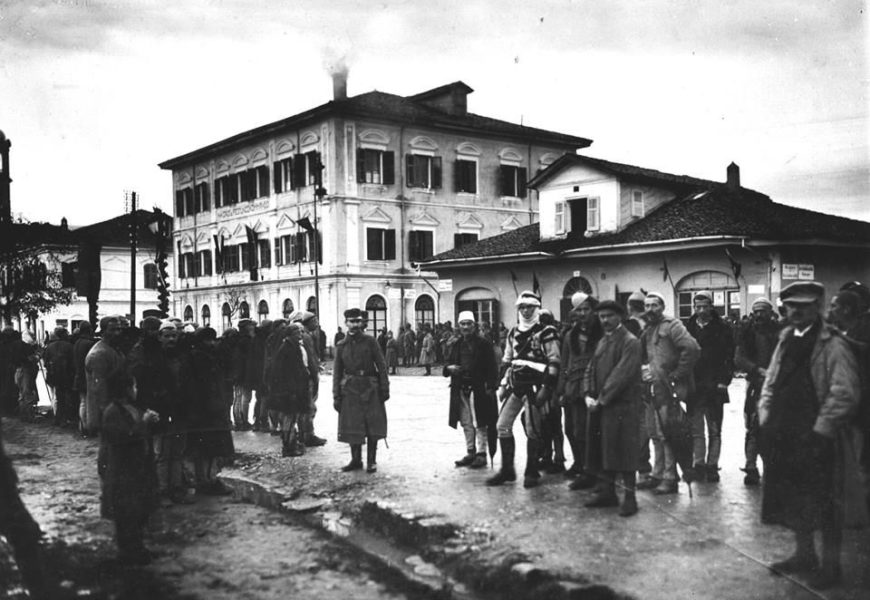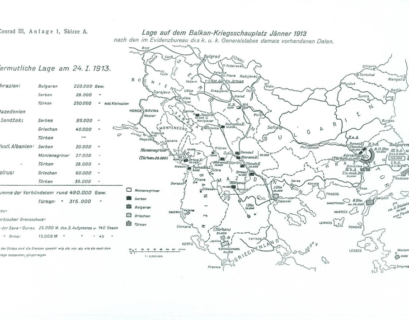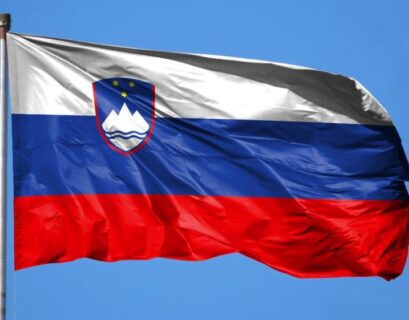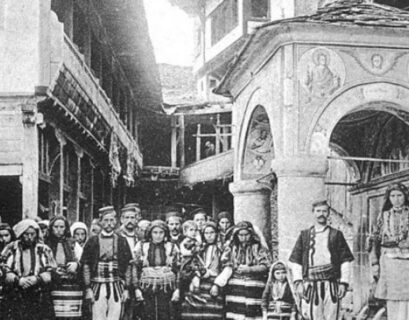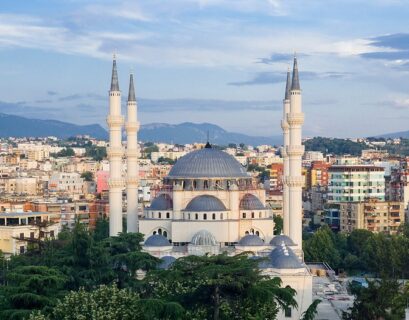Dr. KRISZTIÁN CSAPLÁR-DEGOVICS
During the first Balkan war, Austria-Hungary conducted large-scale humanitarian actions in Albania, an important and so far unresearched element in the relations of the two countries.[1] The Albanian-inhabited areas had received support previously as well; however, the organization of modern state humanitarian actions in this form was a new phenomenon. The change was brought about by the necessities created by the war: during the months it took the Ottoman Empire to fall apart, the position of Albania was rather uncertain, which, from the point-of-view of international law, made it impossible to maintain those Austrian-Hungarian financial channels through which the various Albanian organizations and social groups had received regular funds. The war technically also made local disbursement of subventions virtually impossible, just as the people were increasingly in need of money and help. Due to the war a significant part of the Kosovo and [North] Macedonia Albanians became destitute. Large groups (tens of thousands) headed for the Adriatic and tried to survive the conflict there. The war spared parts of the Albanian coastline but this area also witnessed enormous casualties. For example, the livestock of the North Albanian mountain tribes had largely perished, which, in the long run, undermined the economic foundations of tribal life. The war and the refugees created a catastrophe that called for humanitarian action.
Thanks to the reports[2] of the journalists and war correspondents, the international public could keep track of how the situation of the local population deteriorated. Since late autumn of 1912 the public of the two Adriatic great powers had viewed the Albanian events with increasing concern. Political journalists more and more often raised the issue of launching humanitarian actions, partly to aid those living in areas devastated by the war and partly because of the rivalry between the two great powers. However, the war situation changing on a daily basis and the internal conflicts of the international diplomacy failed to allow a substantive discussion of the issue either in Vienna or in Rome. It was not before the spring of 1913 that the largest scale humanitarian action took place in Shkodër.
The fortified town was the biggest fortress of the empire. Following the general collapse of the Ottoman military in early November, 1912, it was only Shkodër, besides Ioannina and Edirne that still offered resistance against the power of the Balkan allies. The occupation of Shkodër proved to be essential both economically and politically for Montenegro, therefore the little Slavic state was determined to secure the town.
Montenegrin forces cut off Shkodër at the end of October[3]. The besieged settlement provided shelter for a throng of people: besides a population of 35 000[4], as many military personnel and thousands of refugees were forced to stay within the town walls. Virtually there was no safe place to be found in the town as the Montenegrin and Serbian artillery bombarded not only the fortress but also the civilian quarters. Even the buildings of the Christians (e.g. hospitals) were not spared in the bombardment. Due to the relative safety of the foreign consulates, hundreds of civilians took shelter in such buildings which were then decorated with huge national banners of the great powers. In spite of the efforts, from mid-January on, the consulates also became exposed to bombardment. The town ran out of food and fuel already before the middle of winter. Ironically enough, Leo Krajewski, the Shkodër consul of France, who strongly supported the Serbian and Montenegrin ambitions during the London negotiations, became homeless during the siege as his home was bombarded to pieces; what is more he also ran out of food and fuel. He was provisioned by the military commander of the town and his fellow consuls. The personnel of the foreign consulates with the exception of the Italians and Austro-Hungarians were finally evacuated from the town in early March.[5]
Meanwhile the siege was becoming harsher: in February, 1914, it transpired to the King of Montenegro, that he will not be able to come in possession the desired town in the London great power negotiations. That is, if he wished to secure Shkodër, he had no other choice than to storm it[6]. As it turned out, the King had not been mistaken: political considerations in the London conference on 22 March, 1913 prompted the decision makers to grant Shkodër to Albania in return for the towns of Peja, Gjakova, Prizren (the present day West Kosovo towns) which were granted to Serbia. Under the terms of the agreement the allied forces had to withdraw from Northern Albania and had to lift the siege of Shkodër[7]. The great powers informed Cetinje and Beograd about the March 22 London agreement in a number of joint statements, the last of which dated on 14th April[8]. However, the military actions of the Allies proved to be more difficult to stop at that point.
Following March 22, the Austro-Hungarian diplomacy repeatedly called attention to the fact that the population and defenders of the town (not to mention the attackers) suffered and lost their lives in an utterly pointless struggle.[9] The temporization also failed to put an end to the countryside massacres against the Albanians. Vienna considered it the joint responsibility of the great powers to execute the decisions made at the conference[10]. As the participants ignored the objections of the Ballhausplatz, Berchtold adopted a harder policy. After King Nikita had ignored the March 28 collective démarche of the great powers[11], Mensdorff, the Austro-Hungarian ambassador in London, attempted to arrange a European mandate for Austria-Hungary and Italy to execute the decree (that is, military measures against Montenegro). However, the idea was not supported by either Berlin or Rome. On March 26, the idea came up that the great powers should make a joint navy fleet demonstration before the Montenegrin coasts. Sasonoff, the Russian Minister of Foreign Affairs believed at that point that there might have been other possibilities to settle the issue diplomatically with King Nikita, but the fact that Montenegro continued to ignore the joint decree of the six great powers posed a growing concern for the head of the Russian diplomacy as well. When the French indicated that their battleships are ready to demonstrate the Russian presence as well, a five-Power fleet began to gather on the Adriatic Sea.
The slow pace of the gathering and the lax blockade in front of Bar had been found unsatisfactory by the Monarchy in mid-April. Although the threat of military intervention caused the Serbian troops to leave Shkodër, King Nikita declined to abandon the siege. The King considered the naval demonstration as the open breach of the great powers’ neutrality[12]. The solution was further hindered by the Consulta, the Italian Ministry of Foreign Affairs, which endeavoured to internationalize the question (Italian and Montenegrin dynasties were related!), in order to prevent Vienna from acting independently. What is more, Imperiali, the Italian ambassador in London having discussed his idea with Berlin suggested financial compensation for Montenegro.
The open resistance of Montenegro and the April 23-24 agreement with Esad Pasha Toptani about the surrender of Shkodër finally infuriated Berchtold Austro-Hungarian Foreign Minister to such an extent that he announced preparations for a military landing operation in Montenegro. The Ballhausplatz was determined to make further unilateral military arrangements: in the first days of May partial mobilization was ordered in Bosnia-Herzegovina[13]. To take such unilateral measures, however, Austro-Hungary needed the benevolent support of Rome which the Consulta would have granted on unfulfillable terms only.[14] The unilateral intervention never took place: Grey, the English Foreign Minister confirmed in Cetinje the imminence of an Austro-Hungarian invasion, while the Tsar government promised financial compensation to King Nikita in return for Shkodër[15].
King Nikita had understood the gravity of his position and on May 4 informed the participants of the London conference that he was ready to submit to the decisions of the great powers and would disclaim possession of Shkodër. The next day, after setting the bazaar on fire and robbing all the merchants, the majority of the Montenegrin troops started to pull out of the town. Finally on May 14 an international naval force of hundreds of troops marched in Shkodër led by Admiral Sir Cecil Burney. Burney soon established the Council of Admirals which was to control the town and its immediate area. This council was the first international governing body in the history of the independent Albania[16]. On May 26, 1913 the great powers in London confirmed in a new resolution the Albanian-Montenegrin and the Albanian-Serbian borders[17]. On August 29, 1913, it was guaranteed in writing that Montenegro shall receive a loan of 30 million francs for Shkodër and that Serbia shall be granted the right to unlimited rail transport to a Montenegrin coastal town that was to be determined later on by the great powers[18].
While the future of the town appeared to be decided in London, in Vienna a decision was made to organize a humanitarian action in Shkodër. The action sought to secure food, fuel and medical provision in an evacuation scenario for the civil population that had been suffering for months. As the town traditionally had been the citadel of Austro-Hungarian advocacy and lobbying and one of the centres of the Catholic cult protectorate, failing to help would have resulted in a serious loss of prestige for Vienna among the Albanian locals.
The Ministry of Foreign Affairs requested King Nikita to permit a humanitarian action, then contacted the joint Ministry of War as well as the Vienna and Budapest governments to arrange the practical details of organization[19]. The Minister of Foreign Affairs wished to avoid giving any political character to the action: according to his intentions the all food, equipment and medical personnel collected by the Austrian Ministry of the Interior was to be shipped from Trieste to Shëngjin in commercial vessels. To avoid any misunderstandings, he informed as to his intentions Mérey Austro-Hungarian ambassador in Rome, and via the ambassador he suggested to San Giuliano, Minister of Foreign Affairs to organize a similar Italian action[20]. A few days later Mérey responded in a telegram that the Consulta would be considering the proposal[21].
Berchtold did not mean to lose time due to red tape, therefore, in order to speed up the action, on March 22, 1913, he requested help immediately from the emperor. In his letter he shortly called Franz Joseph’s attention to the grave situation of Shkodër’s population and to the importance of the rapid humanitarian action. He needed the emperor’s patronage because he was planning to acquire the medical equipment, tents and blankets from the supplies of the Trieste garrison. He also requested a medic team, their being equipped with handguns with a view to the war situation and the appointment of a reliable officer to be in command of the action[22].
Franz Joseph made the necessary arrangements that very day, so in the evening a letter could be sent to the naval department of the joint Ministry of War appointing as commander of the action Captain Ilija Živković, (in the sources: Elias Duschan Zsivkovics von Torontál-Sziget) a Serb nationality living in Hungary[23], who had already received his letter of command in Trieste. Živković seemed the perfect choice, as due to his mother tongue was able to communicate with the Montenegrin-Serbian command that led the siege, he had served for years in the Macedonian international gendarmerie, and had proven his loyalty to the Monarchy on a number of occasions.[24] The action was organized by the Ministry of Foreign Affairs, however, besides the Ballhausplatz, the commander’s reports were received by the joint Ministry of War, the general staff[25] and the military chanceries of Franz Joseph and Franz Ferdinand as well. The reports sent to the military authorities contained a great deal more than just information on the humanitarian aid: Živković reported everything of military significance[26].
After winning Franz Joseph’s patronage, in the evening of March 22, the organizers informed the Trieste authorities about the action via telephone. The town management set up a crisis committee comprising experts from the naval authorities, the military and the Austrian Lloyd. The participants made a list of all they could offer for humanitarian purposes and organized the loading of food and equipment on vessels. On March 24, the governor of Trieste was pleased to announce that the Lloyd steamboat standing by, the Metcovich, did not suffice to carry all provisions, therefore the corporation provided another boat for the action. The name of this second boat was Albanien, in style.
According to the report the governor sent to Berchtold and to Austrian Prime Minister Karl von Stürgkh, the Metcovich (under Georg Lucich’s command) transported a cargo of 1180 tons: 1200 q of rice, 800 q of flour, 30 q of salt, 7 q of tea, 80 q of green beans, 60 q of green peas, 15 q of fat, 160 crates of paraffin, 240 cans of sterilized milk, furthermore salt and preservatives. This food was provided by Lloyd from its stocks. The Albanien was to ship the rest of the food on a scheduled route: 800 q of rice, 700 q of flour, 60 q of green beans and 20 q of sugar. Besides, the Metcovich carried 4 camp stoves (to provide for 500 people altogether), 2200 plates and 500 spoons.
A number of officers from the garrison were ordered under the command of Captain Živković (Captain Peter Altenburger; Rittmeisters Oskar Wawra, Friedrich Rechl and Karl Edler von Naswetter; engineer officer Julius Kromus; Lieutenant Karl Steiner, Julius Ledinegg and reservist Captain Heinrich Hoflehner)[27], and several volunteers also joined him (bakers, butchers and a war correspondent called Hermenegild Wagner, incognito[28]). The Ministry of Foreign Affairs was also represented in the mission by Vice-consul Thautz[29]. The remaining military personnel (15 people with the medics among them) reported for duty in Pula. Besides the civil physicians (Guido von Beden, Albert Marconi, Paul Cagliari) five female[30] and three male nurses constituted the medical personnel. The little fleet also received in Pula 3.000 military blankets, 33 tents, medicine, bandages, 500 portions of tinned food, etc. The “Fratelli Cosulich”, a local company offered another 750 blankets[31]. The medical equipment altogether sufficed to tend to a thousand people. To cover the expenses of the action, the Ministry of Foreign Affairs authorised the commanders of the fleet to withdraw 20.000 francs in gold in Trieste from the local branch of the Austro-Hungarian Bank. Smaller private offerings were also available. Governor Hohenlohe estimated the total expenses of the action at 190-200.000 crowns[32].
The Metkovich set sail for Shëngjin through Pula and Kotor in the evening of March 24, although the Austro-Hungarian envoy in Cetinje indicated that the military maneouvres may make it necessary that the shipment be transported in an Austro-Hungarian ironclad from the Buna estuary to Shkodër[33]. Giesl, the Montenegrin Austro-Hungarian envoy notified the Cetinje authorities about the expedition on March 25.[34]
Meanwhile, the Consulta, also in the course of a few days, organized their own aid shipment. On March 26, 1913, part of the shipment was already on the Albanian coast, while the rest was being shipped from Brindisi. Regarding that pushing the shipment through the Serbian-Montenegrin military blockade threatened to be rather complicated, Berchtold suggested his Italian colleague that the ships of the two powers form a joint convoy and attempt to reach Shkodër together[35]. Italy, in a similar fashion, also wished to avoid attributing a political character to the aid shipment. The aid was carried by the steamboat of Puglia (Flaviogioia). The ever-cautious Italians also prepared three river boats (Jolanda, Mafalda, Peuceta), to cover the distance between the coast and the city. The shipment, as in the case of the Monarchy, was escorted by plainclothes soldiers and physicians[36]. When the Montenegrin troops refused to let them through the blockade they cruised from Shëngjin to Kotor and joined the Živković fleet[37], as Giesl had, by that time, won permission to pass from the Montenegrin authorities in Cetinje[38].
The Italian ships arrived in Kotor in early April. According to Živković’s report[39], they primarily brought medical equipment, a complete camp hospital among other things. IN spite of this, the Austro-Hungarian officer believed that the aid shipment of the Monarchy had been better prepared and equipped. Živković acquired information on the spot and in accordance with the needs of the participants of the expedition, he placed some further orders: he requested Vienna to provide 250 litres of mineral water, 15.000 portions of biscuit, shoes, boots, 40 lamps for the 40 tents of the crew, 2800 litres of paraffin and 3 m³ of firewood[40]. He also held it necessary to send a medical personnel of 15 people, whom he needed for the vaccinations.
Despite the received permit, the boats were forced to anchor in Kotor, since the Montenegrin military denied them free passage on the spot. In mid-April Živković still did not know when exactly he would be able to move on from Kotor. It would have been important to know, as the bakers intended to make 24.000 portions of bread immediately before departure. The officer also communicated in one of his letters that the North Albanian refugees in Kotor requested permission to return home with the aid shipment.[41]
In the meantime, the joint fleet of the Adriatic powers increased by one ship, when another Italian boat set sail with an aid shipment. The Citta di Messina delivered food and some medical equipment and Italy sent it as a hospital boat to the Albanian coasts[42].
The fleet put out only following the fall of the town on April 24. While the Montenegrin troops marching in Shkodër had hardly any food and equipment for themselves, the besieged town’s population faced such hardships that in order to be able to keep the town King Nikita sent messages to Vienna and Rome requesting rapid aid for the inhabitants[43]. Regarding the fact that it was the very Montenegrin military that prevented the shipment from passing, the two Adriatic power requested a written declaration from the King. In it Nikita had to state that he requested the aid actions from the Ministries of Foreign Affairs and that he would grant that the shipments reach their destination. The King accepted these terms[44].
The Austro-Hungarian and Italian units of the great power fleet were also informed about the arrival of the flotilla. Based on his on-the-spot experience Austro-Hungarian Admiral Njegovan sent a telegram to the joint Ministry of War proposing not to charge the Montenegrin army with the distribution of the shipment, because they were likely to use the foodstuff and the medical equipment for their own purposes[45]. The Ballhausplatz took his advice and after a short negotiation with the Italian Ministry they agreed that the distribution be supervised by the two consul-generals in Shkodër. The orders of the consul-generals were synchronised accordingly.[46] When the issue of distribution had been clarified, new shipments were launched to Albania from Dubrovnik (Lokrum 15.116 kg f foodstuff) and from Trieste (Brioni 5.998 kg of foodstuff and Dubrovnik 20.397 kg of foodstuff).
Despite his promises, however, King Nikita still would not let the shipments pass through the blockade. His ulterior motive supposedly was to secure the provisions for his army indeed.[47] A further motive could be his resentment against the great powers for still demanding that he hand over Shkodër occupied at great casualties to the autonomous Albania. The Montenegrin troops therefore still refused to let through the humanitarian expedition about which Admiral Burney also sent reports to London[48]. What finally allowed the flotilla to put out from Kotor was that Montenegro, bowing to the great international pressure, announced its withdrawal from the previously occupied territories (May 4.) and handed over the town to the great power fleet.[49]
Upon receiving the news Živković ordered the bakers to make bread and requested permission to take 5.000 portions of meat, rice and coffee from the army warehouses.[50] When the provisions were acquired, the Metcovich and the Citta di Messina put out to the Buna delta. The first smaller shipments to reach the town were delivered on May 8, by the river steamboat Skutari operating under Austro-Hungarian flags. As the Montenegrin army still had not left the town and the international naval troops were yet to march in, Austro-Hungarian consul-general Zambaur could only start the rationing with great difficulties.[51]
The first major Austro-Hungarian and Italian shipment reached the town on May 10. The cargo of the Metcovich and the Citta di Messina was loaded on river boats at the Buna delta and the two ships returned to Kotor for the next shipment. The Austro-Hungarian – and presumably the Italian – boats navigating upstream on the Buna were welcomed by a throng of Albanians on the banks cheering (“Hurra Austria!”) and firing salute.[52] The town bazaar had been destroyed on the previous day (May 9) by the Montenegrin troops 3000 of which were still stationed in Shkodër. As the international naval force still had not arrived, the bulk of the shipment remained on the boats. The Shkodër consul-general proposed that the distribution be supervised by a committee comprising the two consul-generals and local Muslim and Catholic Albanians.[53]
Following the marching in of the international naval force on May 14-15, steps could be taken to organise the distribution of the provisions. It was high time indeed, as the news of the navy’s arrival brought thousands of malissors into the town.[54] The consulates of the two Adriatic power, led by consul-generals Zambaur and Mancinelli, made arrangements for the shipments to be placed in and distributed from the local Italian school that had been spared by the bombardment. For the duration of the action, the Italian flag was lowered and replaced by Italian and Austro-Hungarian coats-of-arms. The distribution committee was also set up comprising 2 Italian and 2 Austro-Hungarian medical officers and 3 Muslim and 3 Catholic Albanian respectabilities. On May 18 Zambaur could report the setup of a temporary tent camp where till that time food had been cooked for 1000 people and 12.700 portions of bread had been distributed. Zambaur also observed that the correspondents and journalists who arrived with the aid shipments, like Wagner from the Reichpost, leave no stones unturned in order to be able to inform their national public about chance conflicts between the Austro-Hungarians and the Italians. And Wagner’s well-known anti-Italianism did not prove to be helpful in performing the humanitarian action.[55] On May 20, Zambaur had no choice but to refute sentence by sentence one of Wagner’s articles published in Reichpost.[56]
In the local Italian and Austro-Hungarian funded hospitals the medical team also commenced its operations[57]. The physicians had already finished sanitary tasks by May 26. As their mission ran rather high expenses, they were soon ordered to leave for home.[58] For the hospital work, such as giving vaccinations, more physicians were needed. At Zambaur’s request Austro-Hungarian Minister of War, Krobatin appointed three high-ranking medical officers (colonel Leopold Terenkoczy and general staff physicians Bertold Reder and Thaddäus Majewski), and planned to send them off from Vienna on June 5. Their expenses were covered by the Ministry of War (equipment: 500 crowns; daily fee: 40 crowns[59]). As these officers were Živković’s senior, they were formally subordinate to Admiral Njegovan, the Austro-Hungarian member of the Shkodër Council of Admirals.[60] A telegram of June 1, however, illustrates the confusion on the spot: in it Zambaur and Njegovan requested the Vienna authorities not to send off the three physicians. In fact, as the work to be done was becoming less, they also proposed to order home two physicians (Beden, Cagliari), two medics and the five nurses from Trieste.[61] Accordingly, the three physicians did not set out, and the abovementioned staff were ordered to return home.[62] There was, however, another reason for ordering the latter to return: in a confidential report Zambaur informed the Ministry of Foreign Affairs[63] that the team led by Beden failed to meet the requirements of the expedition. They perceived the action as a field trip and they spent most of their time exploring the land around Shkodër engaged in deep conversation (similar problems arose with one of the Italian physicians). The medical work was largely performed by the staff of the local hospitals.
Zambaur consul-general made calculations about the expenses of the expedition on May 26, which was necessary as out of the 20.000 francs withdrawn in Trieste only few thousand remained and that much was also quickly running out. What is more, the civil and the military payments had to be accounted separately: the former to the Ministry of Foreign Affairs, the latter to the Ministry of War. The salary of the civilians was determined on the spot by the medical leader of the expedition, Guido Beden. The physicians, received as much as the officers, that is 40 crowns daily, the nurses received 12-15 crowns every day (Mazzorana head nurse was given 15, the others 12-12 crowns each).[64] According to the finalised data the civil participants cost the Ministry of Foreign Affairs 13.360 crowns. Relevant documentation shows that the two physicians received 3.200 crowns salary, Mazzorana head nurse 1.200 crowns, the other four nurses 3.840 crowns. The two medics were given 1.920 crowns.[65]
On June 25 Živković announced that the humanitarian action had been completed and also informed the Council of Admirals about the accomplishment. The Council thanked for the help on behalf of the local Albanian society.[66] The soldiers started to dismantle the temporary tent encampment. As Živković presented 11 tents, 560 blankets and 552 covers to the most destitute Albanian families he requested the Ministry of Foreign Affairs to arrange with the Ministry of War that he would neither have to ask these items back nor have to account for them with the military authorities. On the one hand, this arrangement could abolish the threat of an endemic, while on the other hand it could help the Monarchy avoid a great loss of prestige.[67] The Ballhausplatz readily granted the request.[68] Živković and his last 14 men finally left Shkodër on July 16. The Ministry of War decided to leave the distributed equipment with the Albanians and that the rest be collected and placed within the military equipment of the Austro-Hungarian troops serving in the town (29 tents, 2.440 blankets and 248 covers).[69]
Although the civilian participants performed their tasks with moderate success, the military leaders were basically satisfied with the army’s performance and commitment. The leader and the provisions officer of the action that is Živkovićot and Lieutenant Steiner were nominated for military award in November 1913.[70] According to the proposal Živković proved worthy of trust, gave excellent performance and as the leader of the action he greatly increased the local prestige of the Monarchy. Steiner received the award for his outstanding working capacity and his resourcefulness.
It was, however, not the last occasion that Živković visited Albania. As a member of the military taking over from the Austro-Hungarian naval troops, he returned to Shkodër as early as late summer or early autumn. In June-July 1914, he decided to invent occupations for the young Albanians wandering aimlessly in the streets. With his senoirs’ permission he collected the boys between the age of 14-20 and held physical education sessions for them. His personal file proves that Živković was a great sports fan[71]. The reason why the Monarchy granted him consent to teach modern European sports and fashionable competitive games to the Albanians was that in the long run Austro-Hungary had been planning to train an armed corps of Albanians. Sport thus served as preparatory means for the subsequent military training.[72] During this period Živković and some of his Austro-Hungarian comrades taught the Albanian youth how to play football and many other sports. As far as I know, this was the time when the first unofficial football matches were played in Albania.[73]
The leaders of Shkodër made steps as
early as November 1913 to set a memorial in honour of the Austro-Hungarian and
Italian humanitarian expeditions, and their proposal won the support of the
Trieste Chamber of Industry and Commerce (Consortio industriale Triestino) as
well in the winter of 1914-15. The idea of a memorial plaque also met the
approval of the two great powers, and they started corresponding regarding the
issue in winter, 1914. The text of the plaque had eventually been finalised by
February 21 and paid tribute to the joint humanitarian action in three
languages: German on the left (“Zur
Erinnerung an die Hilfsexpedition Österreich-Ungarns und Italiens für Skutari,
8. Mai bis 29. Juni 1913.”), Albanian in the middle (“N’Pomêne t’Derguëmit t’Ndimës
Austro-Ungareze-Italiane per Shkoder prej 8 Majit deri me 29 t’Qershorit 1913.”)
and Italian on the right (“A ricordo
della Missione di soccorso italo-austro-ungarico per Scutari dall’8 maggio – 29
giugno 1913”).[74]
The two Ministries of Foreign Affairs and the Trieste Chamber of Industry and
Commerce offered to cover the expenses. The plaque had been completed by March
1914, and was ready to be transported to Shkodër. For reasons still unclear,
the delivery never took place. Finally it was Italy’s declaration of war on 23
May, 1915 that prevented Rome and Vienna from setting a joint memorial to the
humanitarian action.[75]
[1] Not only the relevant monographs and study books, but also the Austro-Hungarian and Albanian source publications have so far neglected to research the humanitarian action. Relevant works have put emphasis on the history of relations between the great powers and on Albania-related political issues in general (borders, principal, statute, capitol etc.).
[2] Ernst Jaeckh, Im türkischen Kriegslager durch Albanien. Heilbronn 1912.
[3] Mitar Durišić, Operations of the Montenegrin Army during the First Balkan War, in: Béla K. Király / Dimitrije Djordjevic (Eds.), East Central European Society and the Balkan Wars. New York 1987, 133.
[4] The population of the town in 1907 according to Ippen: 22.000 Muslims, 12.000 Catholics, 1000 Orthodox volt. Theodor Ippen, Skutari und die nordalbanische Küstenebene. Sarajevo 1907, 38.
[5] The most detailed accounts of the siege were given by a Jesuit monk, Carlo Villavicenzo and Hortense Zambaur, the spouse of the Austro-Hungarian consul. Carlo Villavicenzo, Im belagerten Skutari. Nach den Aufzeichnungen der Skutariner Jesuiten. Wien 1913, 7-21, 25, 47, 52; Hortense Zambaur, Die Belagerung von Skutari (10. Oktober 1912 bis 22. April 1913). Ein Tagebuch. Wien 1914, 10-20, 36, 49, 78, 96, 112.
[6] Durišić, Operations, 135.
[7] Ludwig Bittner et al. Österreich–Ungarns Außenpolitik von der bosnischen Krise 1908 bis zum Kriegsausbruch 1914. Bd 5, Wien–Leipzig 1930, Mensdorff’s telegram, London, 22.3.1913, No.6261, 1032.
[8] Srbik et al, Österreich–Ungarns Außenpolitik, Bd.6, 1930, Mensdorff ’s telegram, London, 14.4.1913, No.6620, 146-147.
[9] Uo. Bd.5, 1930, Berchtold’s telegram to Gies, 18.3.1913, No.6197, 993.
[10] Joseph Swire, Albania – The Rise of Kingdom. London 1929/New Jork 1971, 139.
[11] Srbik et al, Österreich–Ungarns Außenpolitik, Bd.5, 1930, Giesl ’s telegram, 28.3.1913, No.6345, 1085.
[12] Wladimir Giesl, Zwei Jahrzehnte im Nahen Osten. Aufzeichnungen des Generals der Kavallerie Baron Wladimir Giesl. Ed. Generalmajor Ritter von STEINITZ. Berlin 1927, 242.
[13] „If the Monarchy see the time fit, it will execute without delay the European resolutions even on its own.” Srbik et al, Österreich–Ungarns Außenpolitik, Bd.6, 1930, Berchtold’s telegramme circulaire to Mensdorf in London, to Mérey in Rome and to Szögyén in Berlin, 2.4.1913, No.6418, 13. and Berchtold’s telegramme circulaire to the Austro-Hungarian ambassadors and to Giesl in Cetinje, 27.4.1913, No.6790, 263-266; Francis Roy Bridge, From Sadowa to Sarajewo. The Foreign Policy of Austria-Hungary 1860–1914. London 1972, 352.
[14] 1. Until such time as there is still hope to negotiate with Montenegro, military intervention shall be postponed; 2. a Serbian military reaction and the joint answer to that shall be considered; 3. the attack shall be limited to Montenegrin territories; 4. the Rome-Vienna relations shall remain synchronised following the action; 5. the Adriatic powers shall also synchronise their policy with regards to the southern border issue. Robert Kritt, Die Londoner Botschafter Konferenz 1912–1913. Phil. Diss., Wien 1960, 123.
[15] Katrin Boeck, Von den Balkankriegen zum Ersten Weltkrieg. Kleinstaatenpolitik und ethnische Selbstbestimmung auf dem Balkan. München 1996, 47.
[16] Srbik et al, Österreich–Ungarns Außenpolitik, Bd.6, 1930, Giesl ’s telegram, 3.5.1913, No.6873, 338-339.
[17] Id. Mensdorff’s telegram, 26.5.1913, No.7171, 531.
[18] Boeck, Von den Balkankriegen, 47.
[19] ÖHHStA PA, XII/429/11 (Hilsaktion für Skutari), Berchtold’s draft letters to Hungarian Prime Minister László Lukács, 19.3.1913, No.2171, and 22.3.1913, No. 2303.
[20] Id. Berchtold’s draft letter to Mérey in Rome, 22.3.1913, No.2309.
[21] Id. Mérey’s telegram, 23.3.1913, No.3530.
[22] Id. Berchtold’s letter to Franz Joseph, 23.3.1913, No. n/a.
[23] Lieutenant (Dušan Alexander) Ilija Živković von Torontál-Sziget (1870-?) was a son of an army officer. Following his studies in the military institutes of Košice, Székesfehérvár, and Wienerneustadt, he joined the joint army in 1893 (IR. Nr. 46). After his compulsory service he was promoted to company officer in 1902. He was promoted to lieutenant in 1907. According to his qualification sheet he spoke many languages and was an outstanding, hard-working and sports-loving officer, able to maintain excellent relationship with his subordinates. During the action he served in the 32nd Infantry Regiment. KA 1. Personalevidenzen Qualifikationslisten, Kt. 3937, Hauptmann Elias Zsivkovics von Torontál-Sziget.
[24] ÖHHStA PA, XII/429/11, Trieste Governor Hohenlohe’s report to Berchtold, 24.3.1913, Pr. 1838/64, 3.
[25] Photographs of the expedition have been found among the files of the general staff. KA Zentralstellen, Generalstab, Evidenzbureau, AOK-Evidenzbureau, Kt. 3683.
[26] Lásd. KA MKSM, Kt. 15/1/21-18/1 (1913), 18-1/3-90 de 1913, Živković’s telegram to the Ministry of War, 15.5.1913, Präs.Nr. 8061 de 1913.
[27] KA MKSM, Kt. 13/3/41-13/4 (1913), 13-4/101 de 1913, proposal of the joint Minister of War, Präs., 8.11.1913, No.3.325.
[28] The journalist was delegated by the Reichspost and joined the expedition on April 20, in Kotor. ÖHHStA PA, XII/429/11, Berchtold’s note, 20.4.1913, No. n/a.
[29] Id. Rappaport’s draft letter to Thautz, 29.3.1913, No.205.
[30] The five female nurses: Pia Mazzorana, Elise Visentini, Augusta Brunner, Bice Kurschen, Anna Gollner. ÖHHStA PA, XII/429/11, Guido Beden’s report to Zambaur, 21.5.1913, No.22.
[31] Id. Hohenlohe’s report to Berchtold, 24.3.1913, Prl 1838/64, 3.
[32] One subscriber of the Pester Lloyd, a certain Dezső Hervey A. Md, for example, offered the sum of 1000 crowns for the mission. ÖHHStA PA, XII/429/11, the Pester Lloyd’s letter to the Ministry of Foreign Affairs, 29.3.1913, No. n/a. As the Ministry did not use the whole sum for the mission, Doctor Hervey requested that the rest of the amount be sent back to him. Id. Hervey’s letter to the Ministry of Foreign Affairs, 3.5.1913, No.299.
[33] KA MKSM, Kt. 13/3/41-13/4 (1913), 13-4/101 de 1913, proposal of the joint Minister of War, Präs., 8.11.1913, No.13.325, 4.
[34] ÖHHStA PA, XII/429/11, Giesl’s telegram, 24.3.1913, No.3639.
[35] Srbik et al, Österreich–Ungarns Außenpolitik, Bd.5, 1930, Giesl’s telegram, 25.3.1913, No.6299, 1056.
[36] ÖHHStA PA, XII/429/11, Mérey’s telegram, 26.3.1913, No.3827. and Berchtold’s telegram to Mérey, 26.3.1913, No.309.
[37] Id. Strautz’s telegram, 28.3.1913, No.4374.
[38] Id. Mérey’s telegram, 27.3.1913, No.4197. and Strautz’s telegram, 28.3.1913, No.4374; KA MKSM, Kt. 66/10-70/1/120 (1913), 69-5/6 de 1913, Živković’s telegram, 29.3.1913, Präs.Nr.4977.
[39] ÖHHStA PA, XII/429/11, Giesl’s telegram, 25.3.1913, No.3792. geheim.
[40] KA MKFF, Kt. 203, report to Franz Ferdinand [by Bardolff?, Ulmansky?], 2.4.1913, No. n/a.
[41] ÖHHStA PA, XII/429/11, copy of Živković’s report to the Ministry of War, 15.4.1913, K.M.Präs.No.6417.
[42] Ibid.
[43] ÖHHStA PA, XII/429/11, Mérey’s handwritten letter to Berchtold, 17.4.1913, No.25B.
[44] Id. Berchtold’s telegram to Mérey, 25.4.1913, No.415.
[45] Id. Giesl’s telegram, 26.4.1913, No.4223.
[46] „Entsendung Lebensmittel Skutari erscheint nach Anschauung der Admirale nicht rätlich, da deren Verwendung durch Montenegriner für einige Truppen und Zwecke höchst wahrscheinlich ist.” ÖHHStA PA, XII/429/11, report from the Austro-Hungarian unit of the great power fleet to the joint Ministry of War, 27.4.1913, No. n/a.
[47] ÖHHStA PA, XII/429/11, Berchtold’s telegram to Giesl (No. 119.), to Mérey in Rome (No. 415.) and to the joint Ministry of War (No. 1908.), 26.4.1913; and Mérey’s telegram, 29.4.1913, No.4751.
[48] Id. Giesl’s telegram, 2.5.1913, No.655.
[49] Id. report from the Austro-Hungarian unit of the great power fleet to the joint Ministry of War, 2.5.1913, No. n/a.
[50] KA MKSM, Kt. 15/1/21-18/1 (1913), 18-1/3-80 de 1913, report from the Austro-Hungarian unit of the great power fleet to the joint Ministry of War, 6.5.1913, Nr.2177 and ÖHHStA PA, XII/429/11, Giesl’s telegram, 7.5.1913, No.1778.
[51] ÖHHStA PA, XII/429/11, report from the Austro-Hungarian unit of the great power fleet to the joint Ministry of War, 8.5.1913, No.2031.
[52] Id. Zambaur’s telegram, 8.5.1913, No.2092.
[53] Id. Živković’s telegram to the Ministry of Foreign Affairs, 10.5.1913, No. n/a.
[54] Id. Zambaur’s telegram, 10.5.1913, No.2446.
[55] KA MKSM, Kt. 15/1/21-18/1 (1913), 18-1/3-90 de 1913, Živković’s telegram to the Ministry of War, 15.5.1913, Präs.Nr. 8061 de 1913.
[56] ÖHHStA PA, XII/429/11, Zambaur’s report to Berchtold, 18.5.1913, No.17.
[57] ÖHHStA PA, XII/430, Varia, Zambaur’s telegram, 20.5.1913, No.235.
[58] The hospital of the Zagreb Daughters of Charity of Saint Vincent de Paul in Shkodër operated at the expense of the Austro-Hungarian cult protectorate. Engelbert Deusch, Das k.(u.)k. Kultusprotektorat im albanischen Siedlungsgebiet. Wien-Köln-Weimar 2009, 621-623.
[59] ÖHHStA PA, XII/429/11, Zambaur’s report to Berchtold, 26.5.1913, No.22.
[60] This was the sum of the daily fee of the officers participating in the mission. Id. Guido Beden’s report to Zambaur, 21.5.1913, No.22.
[61] Id. Krobatin’s letter to Berchtold, 29.5.1913, No.8594.
[62] Id. Zambaur’s telegram, 1.6.1913, No.216.
[63] Id. letter of the Ministry of Foreign Affairs to the Trieste Governorate, 2.6.1913, No.4154.
[64] „Ich kann nicht umhin, Euer exzellenz ergebenst zu melden, dass die Tätigkeit der sanitären Hilfsexpedition im Allgemeinen, als insbesondere jene des Leiters Dr. Beden in keiner Weise den Ansprüchen entsprach, die an eine humanitäre Mission in ernsten Zeiten gestellt werden müsste. Dr. Beden betrachtete seine Entsendung nach Skutari als einen Vergnügungsausflug, und beschränkte sich darauf, mit den Wärterinnen die Umgebung zu besuchen, die Arbeit auf Dr. Selem und Dr. Marconi abwälzend.” ÖHHStA PA, XII/429/11, Zambaur’s report to Berchtold, 16.6.1913, No.37.
[65] ÖHHStA PA, XII/429/11, Guido Beden’s report to Zambaur, 21.5.1913, No.22.
[66] Id. Zambaur’s report to Berchtold, 16.6.1913, No.37.
[67] ÖHHStA PA, XII/430/12 (Internationale Administration von Skutari 1913), Njegovan’s report to the Ministry of War, 25.6.1913, Res.Nr. 1169/m.
[68] ÖHHStA PA, XII/429/11, Zambaur’s telegram, 29.6.1913, No.1864.
[69] Id. Zambaur’s telegram, 3.7.1913, No.414.
[70] Id. Zambaur’s telegrams, 16.7.1913, No.3413. and No. 3412, and 7.8.1913, No.1471.
[71] KA MKSM, Kt. 13/3/41-13/4 (1913), 13-4/101 de 1913, proposal of the Minister of War, Präs., 8.11.1913, No.13.325.
[72] KA 1. Personalevidenzen Qualifikationslisten, Kt. 3937, Hauptmann Elias Zsivkovics von Torontál-Sziget.
[73] ÖHHStA PA, XIV/60/20 (Verhandlung zwecks Organisierung einer albanesischen Wehrmacht, 1914. II-VII), register of the Ministry of War to the Ministry of Foreign Affairs, 17.7.1914, Präs.No. 2837.
[74] If archive hints can be credited, then we may safely say the general staff of other great powers also took a fancy for the football, and they started to train their own Albanian teams, which probably played matches with each other. KA MKSM, Kt. 30-43 (1914), 33-1/14 de 1914, extract from a file of the Ministry of War (die militärsportliche Erziehung der albanischen Jugend), 8.7.1914, Präs.Nr.2837.
[75] ÖHHStA PA, XII/429, Juli 1915, the Skutar consul-generale’s letter to the Triest Chamber of Industry and Commerce. 21.2.1914, No.441/1.


